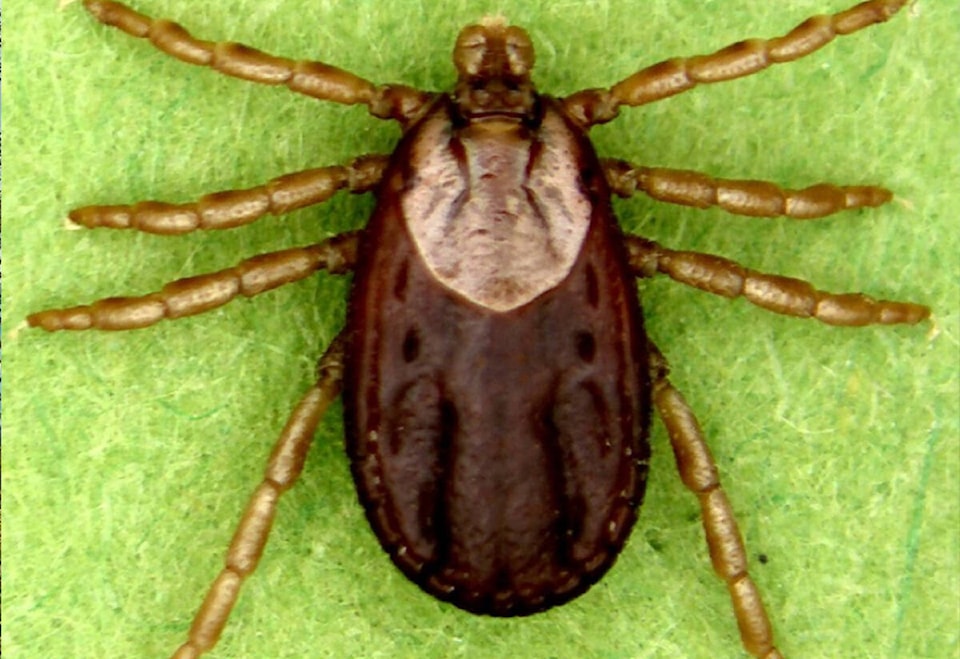Fall and winter are when moose (or winter) ticks become more noticeable. A particularly heavy infestation can lead to severe anemia, skin irritation, and hair loss in moose.
As many as 100,000 ticks have been counted on a single infested animal and the animals can become so weak and distracted from feeding that they die.
Moose or winter ticks can also attach to deer, elk, caribou and even sometimes horses and cows. Occasionally they might bite dogs, beavers, bears, and coyotes. They rarely bite and feed on humans and are not considered a threat to human health.
They range from the Yukon territory south to the Mexican border and from coast to coast in Canada and the USA.
Ticks are arachnids so they have eight legs. Winter ticks are tiny (5 mm) in length, but fully engorged females can reach two-plus centimetres long. Adult females typically have an oval, reddish-brown body with a pale creamy coloured ‘shield’ on their back just behind the head. Males are darker and their shield is cross hatched with white.
Contrary to popular belief among some people, ticks do not jump, fly, or drop from trees onto their hosts. Instead, they have an instinctive behavioural pattern called questing.
In the fall, larval ticks are drawn to areas frequented by potential hosts by sensing increased carbon dioxide concentrations, body heat, vibrations, and other animal clues. The larvae climb up a low shrub or grass in clusters where they sit waving their front legs about in the air until a host brushes by close enough that they can grab hold of it.
If they fail to latch on, they will drop to the ground and repeat the process until they are successful in gaining a foothold. They can survive without a blood meal for a long time. Once on the host, they might wander around for a while until they find a good place to pierce the host’s skin and have a good suck on its blood. Females need a big blood meal to produce eggs so they will stay attached for longer than the males.
Winter (moose) ticks are one-host ticks which means that all stages of their life cycle (larvae, nymphs, and adults) obtain their blood meal on the same host. Engorged females drop off in the spring and lay their eggs in the leaf litter.
Confirmed evidence suggests that the two ticks known to bite and suck blood from humans are not found northwest B.C.
The Rocky Mountain wood tick, a carrier of Rocky Mountain fever, tularemia, and Colorado tick fever occurs as far north as Williams Lake. It may also cause tick paralysis.
The Western Black-legged tick that carries a microorganism responsible for Lyme disease occurs on Vancouver Island, the Gulf Islands and the mainland coast between the U.S. border and Powell River.
The incidence of tick-borne diseases in the Northern Health region is minimal and is usually a result of contact with the ticks outside our area.
